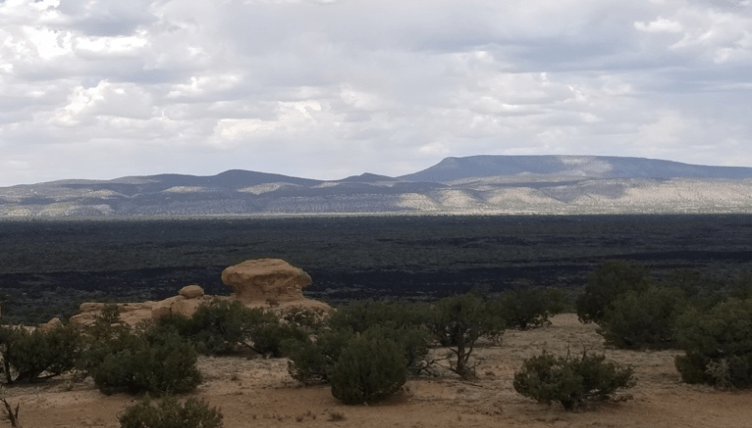By Julianna Falcomata
This week I did one of the most insane things that I have ever attempted in my life. I participated in a rattlesnake training in which we were instructed on how to properly transport a snake that may be in a dangerous spot for guests or in a hazardous location for the snake itself. I am deathly afraid of snakes so this gave me a ton of anxiety beforehand. I had trouble sleeping for about a week before the training. I was a nervous wreck, and Rattlesnakes can kill you. Why would I voluntarily get up close and personal with one? Well I did. And it was terrifying.
Rattlesnakes are widespread across the United States and are incredibly adaptive. They live in extremely arid areas as well as grass and wetlands. It is common to see different types of rattlesnakes in this part of New Mexico, and I have heard of people getting bit. The instructor of the course was very reassuring. He owns a rattlesnake museum in Albuquerque and knew a lot about the behaviors of the snakes. He described snakes as mostly being solitary animals, and that they usually only strike when they feel threatened. While it is possible to die from being bitten by a rattlesnake, it is uncommon. Only about 1 out of every 1000 people who are bitten die. About 20% of bites are “dry” meaning the snake doesn’t inject you with any venom. After hearing this information, my nerves calmed down a little bit, or so I thought.
We were all given the opportunity to move the snake into a different bucket safely, using a long hook. I was still very hesitant about participating, but as I watched people I work with, I became more comfortable. The snake they had us practice on was a rescue western diamondback, which had been in captivity for around 15 years. The snake was pretty calm, as it was used to these types of trainings. Since they do not de-fang the snakes that they rescue, they use snakes that are calm and used to people for training purposes. As everyone took their turn, the snake usually went into the bucket no problem. They asked if everyone that had wanted to participate got the chance, and even though I had anxiety, I decided to give it a shot.
I was really confident until I was unscrewing the bucket the snake was in and I heard it start to rattle. My heart started racing and I wanted to back out, but everyone was watching and encouraging me. I continued and opened the lid. The snake was inside, so I used the hook and started trying to maneuver it out. The snake was very heavy, so it took me longer then I thought it would. I successfully put the snake into the adjacent bucket, and was getting ready to screw on the lid when it decided to start slithering out. I think that the snake was tired of being moved around, no longer wanted to be in a bucket. I had trouble getting it to stay in the bucket, and it was really frustrating and scary, especially when it looked me in the eyes. I felt like it was taking forever because everything was going in slow motion. When I finally was able to get the snake into the bucket and close the lid, I felt instant relief. I survived! I couldn’t believe I actually successfully completed the training. I am still terrified of snakes and hope I never have to do that again, but I am glad I was able to come out of my comfort zone and do something even though I was scared. This is one of many experiences I have had here at EL Malpais that will stick with me forever.



